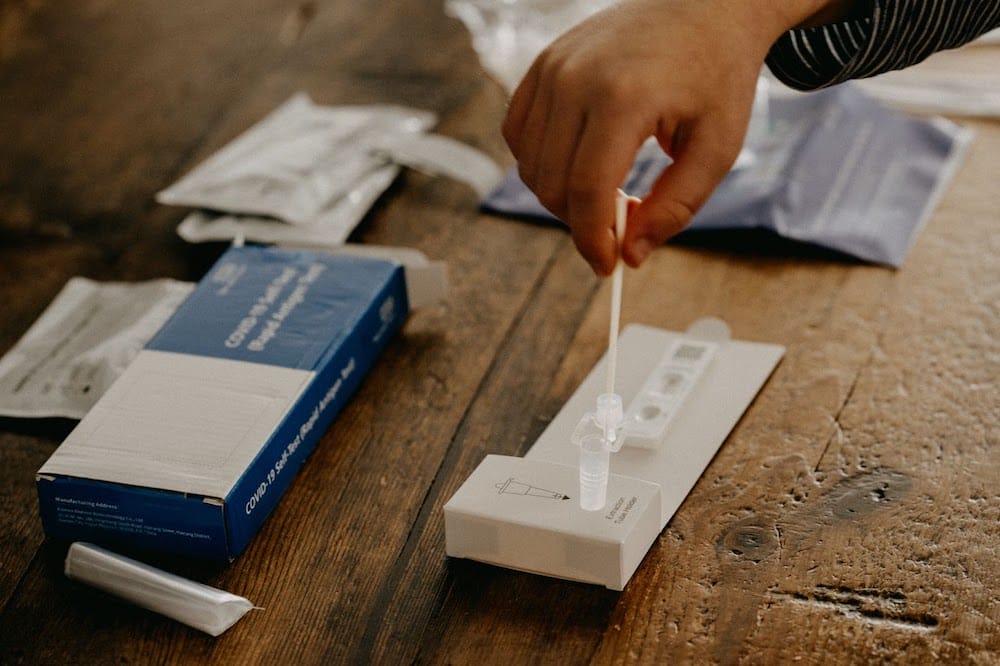Image URL: https://unsplash.com/photos/PXZEg4hnyVw
COVID home test kits or self-test kits such as Flowflex Antigen Test have been made available to the general public in most parts of the world. While there are concerns on their reliability, especially that not everyone would have the proficiency in administering such tests, the consensus is that quick and early detection through home test kits can help prevent community transmission of the disease.
If you are planning to take a home test kit, here are a couple of things you need to know:
Who should use a home test kit for COVID-19?
Home test kits are best used by symptomatic individuals, and those that have been exposed to a confirmed COVID-positive case. This will allow you to see results quickly, giving you an indication of whether you should self-isolate or if it is safe to continue with your day-to-day activities. If you have been exposed, tests are more accurate 5 days from exposure.
How do home test kits work?
There are different types of COVID-19 test kits. Typically, mucus from the nose or throat is collected, but there are tests that use saliva samples.
After a sample is collected, the sample is usually dipped into a solution, and then the sample is placed on the test kit that makes use of lateral flow technology. This involves the use of an absorbent pad in which the sample flows through, and then antibodies are used to determine whether there is presence of the COVID-19 antigen. If that’s the case, a colored label in the test line will appear, indicating a positive result. If no line appears in the test line, then it means that the COVID-19 antigen is not present, indicating a negative result.
Are home test kits accurate?
Home test kits are accurate but are considered less sensitive as compared to polymerase chain reaction (PCR) tests and other molecular diagnostic tests.
Antigen tests are best used when you have high viral load such as when you have symptoms, or when you have been exposed recently.
Home test kits are best for getting quick results especially when you are already exhibiting symptoms, or if you have been in close contact with a positive individual. It is best to seek another confirmatory test using a PCR to support a negative result from a home test kit.
How to use a home test kit?
Home test kits are fairly easy to use, and the kit will contain everything you need from sample collection to getting the results (with the exception of certain test kits where sample collected still needs to be sent to a lab).
Your specific home test kit should contain easy-to-follow instructions starting from how to conduct a swab up to how long you should wait for the results to come out (which should be around 15 minutes for most home test kits).
One should read the instructions carefully, especially with sample collection, as being unable to do it right may affect the results. You should also be aware of when you should use a home test kit.
It cannot be highlighted enough that home test kits are most accurate when the viral load is high. So it should be used when you show symptoms, or have been exposed recently. If you do not fall into these categories and your results are negative, getting a confirmatory test is recommended so that even low viral load can be detected.
Use home test kits for peace of mind
If you are exhibiting symptoms, or have been in close contact with someone who is confirmed to be positive with the SARS-Cov-2 virus, using a home test kit will help you know whether you caught it too. It is a quick way for you to know whether or not you would need to self-isolate so you wouldn’t cause the virus to spread more. So check out home test kits now so you would have some handy when the need arises.
The Editorial Team at Healthcare Business Today is made up of skilled healthcare writers and experts, led by our managing editor, Daniel Casciato, who has over 25 years of experience in healthcare writing. Since 1998, we have produced compelling and informative content for numerous publications, establishing ourselves as a trusted resource for health and wellness information. We offer readers access to fresh health, medicine, science, and technology developments and the latest in patient news, emphasizing how these developments affect our lives.








